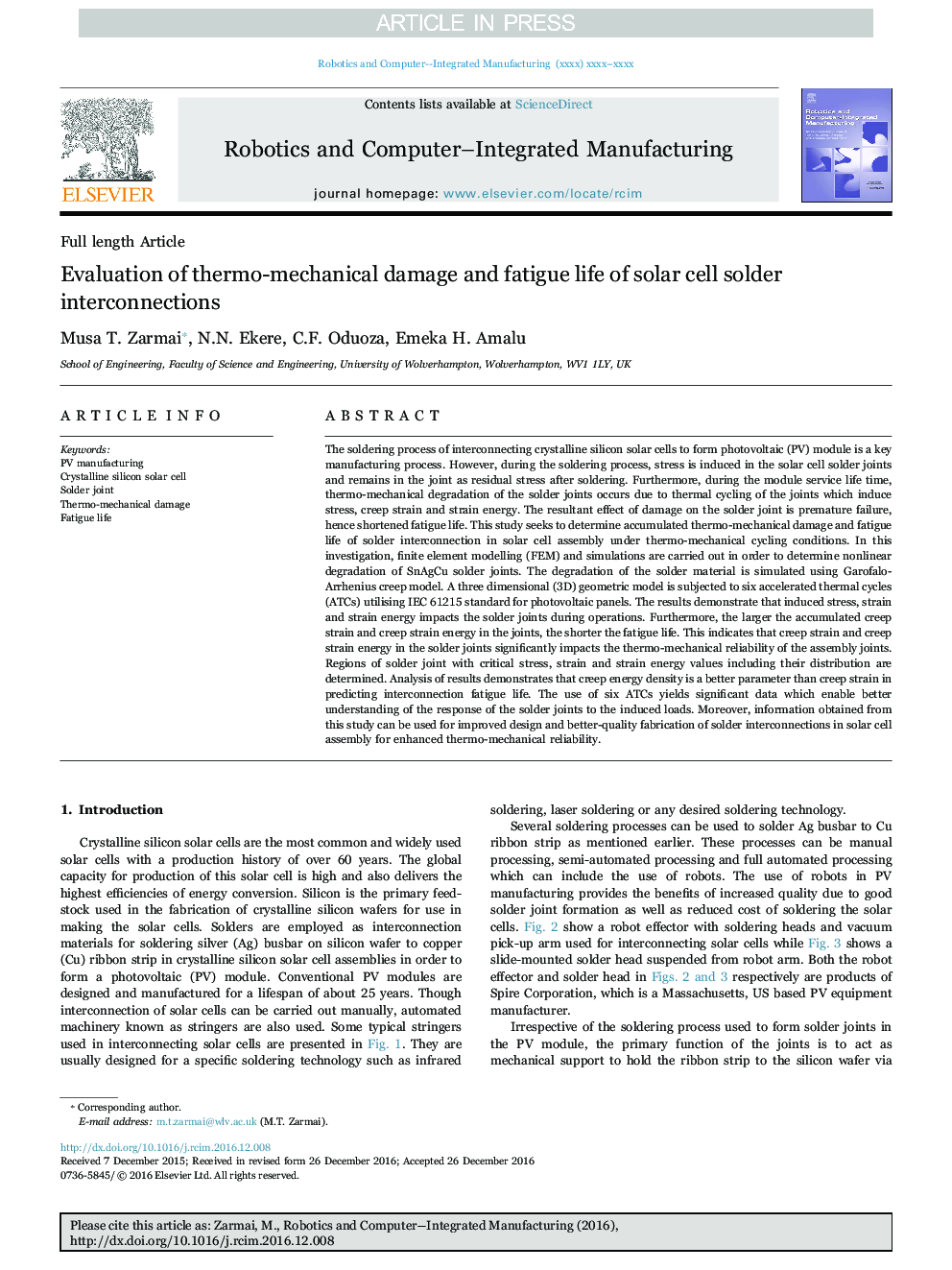| کد مقاله | کد نشریه | سال انتشار | مقاله انگلیسی | نسخه تمام متن |
|---|---|---|---|---|
| 4949006 | 1439930 | 2017 | 7 صفحه PDF | دانلود رایگان |
عنوان انگلیسی مقاله ISI
Evaluation of thermo-mechanical damage and fatigue life of solar cell solder interconnections
ترجمه فارسی عنوان
ارزیابی آسیب های حرارتی مکانیکی و عمر خستگی اتصالات لحیم کاری خورشیدی
دانلود مقاله + سفارش ترجمه
دانلود مقاله ISI انگلیسی
رایگان برای ایرانیان
کلمات کلیدی
موضوعات مرتبط
مهندسی و علوم پایه
مهندسی کامپیوتر
هوش مصنوعی
چکیده انگلیسی
The soldering process of interconnecting crystalline silicon solar cells to form photovoltaic (PV) module is a key manufacturing process. However, during the soldering process, stress is induced in the solar cell solder joints and remains in the joint as residual stress after soldering. Furthermore, during the module service life time, thermo-mechanical degradation of the solder joints occurs due to thermal cycling of the joints which induce stress, creep strain and strain energy. The resultant effect of damage on the solder joint is premature failure, hence shortened fatigue life. This study seeks to determine accumulated thermo-mechanical damage and fatigue life of solder interconnection in solar cell assembly under thermo-mechanical cycling conditions. In this investigation, finite element modelling (FEM) and simulations are carried out in order to determine nonlinear degradation of SnAgCu solder joints. The degradation of the solder material is simulated using Garofalo-Arrhenius creep model. A three dimensional (3D) geometric model is subjected to six accelerated thermal cycles (ATCs) utilising IEC 61215 standard for photovoltaic panels. The results demonstrate that induced stress, strain and strain energy impacts the solder joints during operations. Furthermore, the larger the accumulated creep strain and creep strain energy in the joints, the shorter the fatigue life. This indicates that creep strain and creep strain energy in the solder joints significantly impacts the thermo-mechanical reliability of the assembly joints. Regions of solder joint with critical stress, strain and strain energy values including their distribution are determined. Analysis of results demonstrates that creep energy density is a better parameter than creep strain in predicting interconnection fatigue life. The use of six ATCs yields significant data which enable better understanding of the response of the solder joints to the induced loads. Moreover, information obtained from this study can be used for improved design and better-quality fabrication of solder interconnections in solar cell assembly for enhanced thermo-mechanical reliability.
ناشر
Database: Elsevier - ScienceDirect (ساینس دایرکت)
Journal: Robotics and Computer-Integrated Manufacturing - Volume 47, October 2017, Pages 37-43
Journal: Robotics and Computer-Integrated Manufacturing - Volume 47, October 2017, Pages 37-43
نویسندگان
Musa T. Zarmai, N.N. Ekere, C.F. Oduoza, Emeka H. Amalu,
